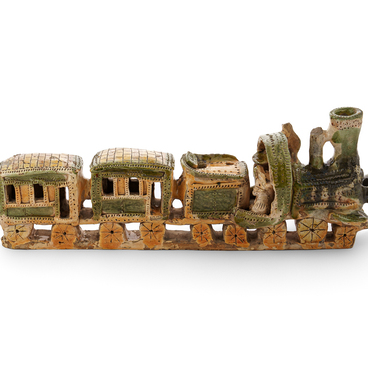Pottery has existed for many millennia. In almost every village, there were ceramists who provided local residents with necessary household items such as pots, jugs, and bowls. The handicrafts of Zadonsk Uyezd were studied by Vladimir Illarionovich Zhukov. He was an active contributor to the Lipetsk Society for the Spread of Scientific and Practical Knowledge named after Peter the Great and in 1910 became its honorary member. Vladimir Zhukov had a farm near the village of Spasskoye where he organized a “peasant town”, developing subsidiary peasant crafts such as the manufacture of winnowing machines, other agricultural tools, and pottery. In this region, traditional pottery has been known for a long time. Sometimes, local craftsmen created true masterpieces from clay. Vladimir Zhukov donated a unique kvassnik jug shaped like a round clock to the museum collection. The jug is reminiscent of the style of Skopin ceramics. This is a rare artwork created by Zadonsk potters.
A kvassnik is a vessel used for storing and bottling kvass, a traditional Russian drink. The name appeared in Moscow in the 19th century and was used to refer to a ceramic disc-shaped vessel with a spout, neck, and curved handle. In the middle of the vessel, there was a through hole. Making a kvassnik was rather complicated, as not every potter was able to produce a vessel with such a unique shape. Kvass had to be stored in a cool place, but the space in the cellars was limited. This is why a kvassnik was rather flat and had a hole in the middle where ice could be placed for additional cooling. Sometimes, the hole was made wider so that one could put a hand through it for easier access.
The displayed kvassnik dates back to the early 20th century. It has a narrow neck that flares at the top. There is a handle on the right and a spout shaped like a bird (its head has not been preserved). The dial is painted white, with black hands and Roman numerals. Inside, the jug is covered with glaze. There is a traditional hole in the middle.



